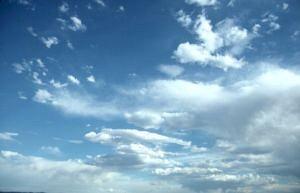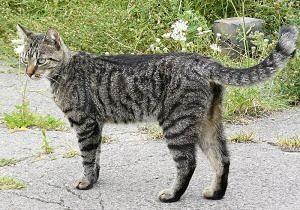
If you wish to understand yourself,
seek yourself in the wideness of the world;
if you wish to understand the world,
seek in the depths of your own mind.
Rudolf Steiner
Air: observing characteristics
Attitude
The features of air are:
- spreading, that is, the tendency to achieve evenness; and
- unselfishness, that is, making way for other things and allowing them to manifest themselves.
In the two previous steps, you have observed objects from the outside (earth-type observations) and have observed their external and internal movements (water-type observations). You can now go a step further and open up your inner self in an unselfish, self-effacing way to allow that which you have observed to manifest itself. Just like air allows other things to manifest themselves, you can allow an object to manifest itself within you. This is something that also happens when you remember something, but such recollection is still rather close to the water element. The characteristic aspect of the air element is that something new appears, something that is not outwardly visible. The mental picture you create reveals the characteristics, an ideal image or 'gesture' of the object you're observing. This is a concrete mental image, which shows the 'gesture'. If you're observing a common oak, the air-type observation yields an image of what typifies the common oak. This image integrates all observations. You can achieve this by imagining the oak as accurately as possible, from all sides and in every detail, and then trying to define its characteristics. Once you have identified these in your mind, you can find them in each component.
You must not colour the characteristics or the image with value judgements, as that would mean you're partly or solely observing yourself, rather than the object. Just like objects in real air are more clearly visible if the air is pure, the characteristics will be clearer if you yourself are inwardly 'pure'.
Compared to the water mode of observation, the air mode involves more inward-looking observations. The object is no longer observed in the outside world, but as a mental image. This image, however, is concrete, in the sense that it could exist.
Results
The result of this type of observation is that you observe characteristics. These may be general characteristics (like the characterisation of the oak genus, or the cruciferous plant family), or the specific characteristics of a particular plant you're observing. You can't see characteristics in the real world; there is no such thing as an ideal oak representing the genus Quercus, or a general crucifer.
If you observe one common oak, you can observe the characteristics of this particular tree. After you have observed many common oaks, you can start to see the characteristics of the species. And after you have observed several species of oak, like cork oak, durmast oak and red oak, you can observe their 'oak-ness'. This goes beyond the gesture of the common oak and includes all oaks.
An example: dog and cat
As you approach a farm, the first animal you meet is the dog. It sees you coming a long way off, starts to bark and runs towards you. How the animal behaves, will depend on how it was trained. The dog will probably follow you. It is probably curious to see what will happen and wants to accompany you. As you get closer to the house, the dog may start to bark more fiercely. It will often try to decide which one of you is boss: it or you.
It's probably only after you have entered the house, met the farmer and been given some coffee, that you see the cat, which lies snoozing in some corner of the room and may come over to nuzzle up against your hand. It doesn't run to meet you brimming with expectation, but only starts to show signs of activity after you've been in the house for a while.
A striking feature of dogs is that they spend a lot of their time outside running around in the area where they're allowed to go. They patrol the area's boundaries, guard them and bark when a stranger tries to enter. When given an order, they go straight for their target and don't let go. Dogs don't spend much time indoors, usually only to eat or rest, which they always tend to do at the same spot. Dogs can easily be trained and are social animals.
By contrast, cats spend much time indoors and can snooze for hours on end in a warm place of their own choosing. They don't go out much, and if they do, they tend not to stray far from the house. They do tend to go to all kinds of places, as they don't accept boundaries imposed by others, although they do defend a territory. They catch mice and other animals, which they bring indoors. They like to lie on people's laps, can hardly be trained and remain themselves, preferring their own company. Cats are by nature solitary animals. Indeed, it's been said that it is they who allow people to live in with them, rather than the other way round. (Van Gelder, 2003)
The air-type observation reveals the characteristics of these two animals. A cat takes up a central position; it decides for itself how it will behave and is a self-willed and individualist animal. A dog, by contrast, guards the boundaries of an area and is characterised by movement, activity and openness. It is a social animal and allows itself to be trained. You can strengthen your observations and develop a mental image, which enlivens and clarifies the characteristics. The gesture allows other features, such as hunting behaviour (dogs chase their prey, while cats stalk it) and various physical traits (the elongated head and long legs of dogs against the round head and short legs of cats) to be fitted in.

Air: the unselfish element

A dog

A cat
Exercises
Select an object (a physical object, situation or event) for which earth-type and water-type observations have been made. Try to identify the characteristic features. Try to find an image that would clarify the gesture.
If you've chosen a tree, this might involve drawing an idealised tree (such as an idealised oak).
If you've chosen an animal, it might mean trying to capture its appearance or behaviour in an image or analogy.
All objects, but especially those that are larger than an organism, such as a farm or a landscape, allow you to study new aspects that provide more information about the object as a whole.
Parts reflecting the whole
Trace the characteristic gesture in various parts of the object.
